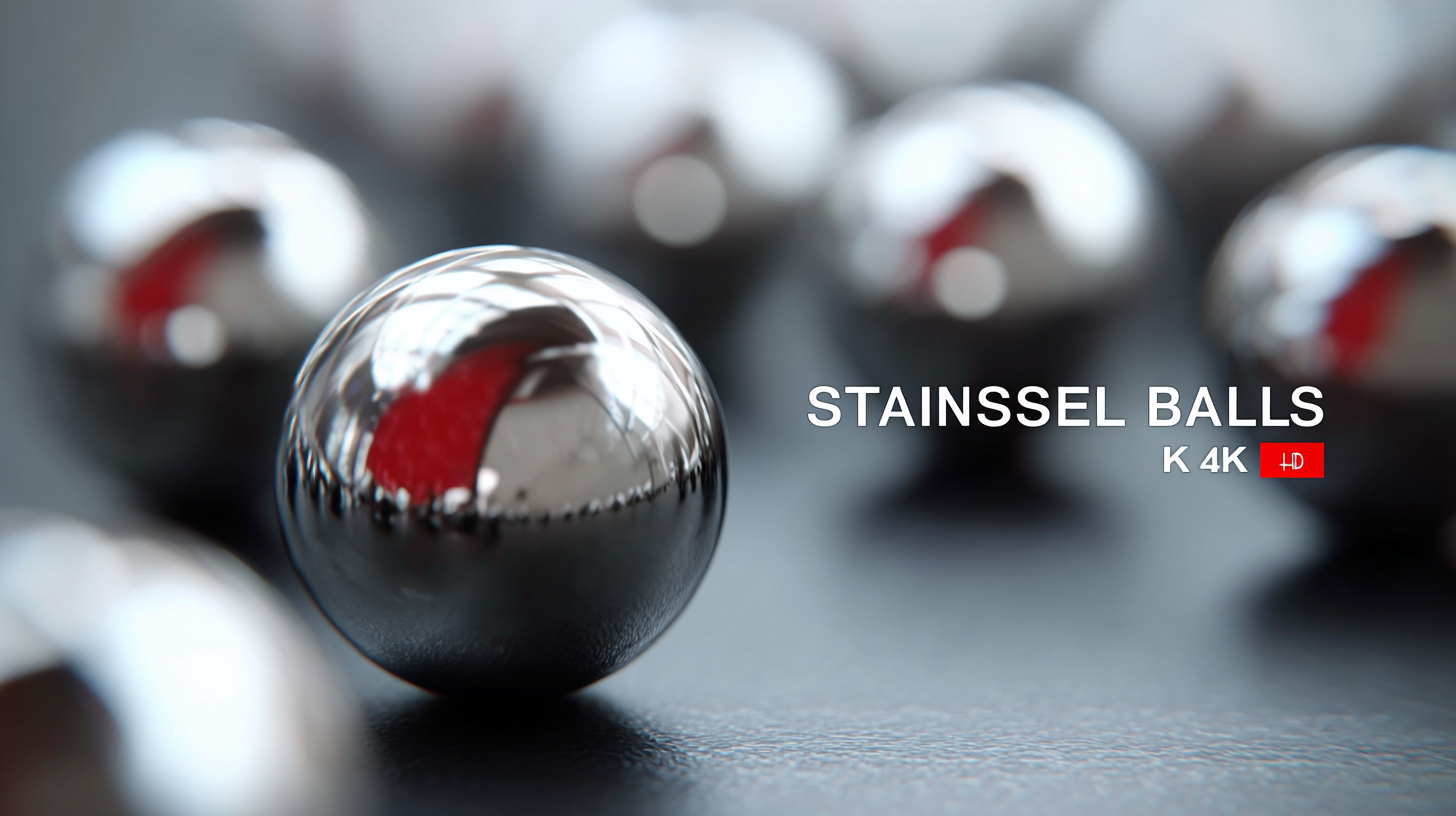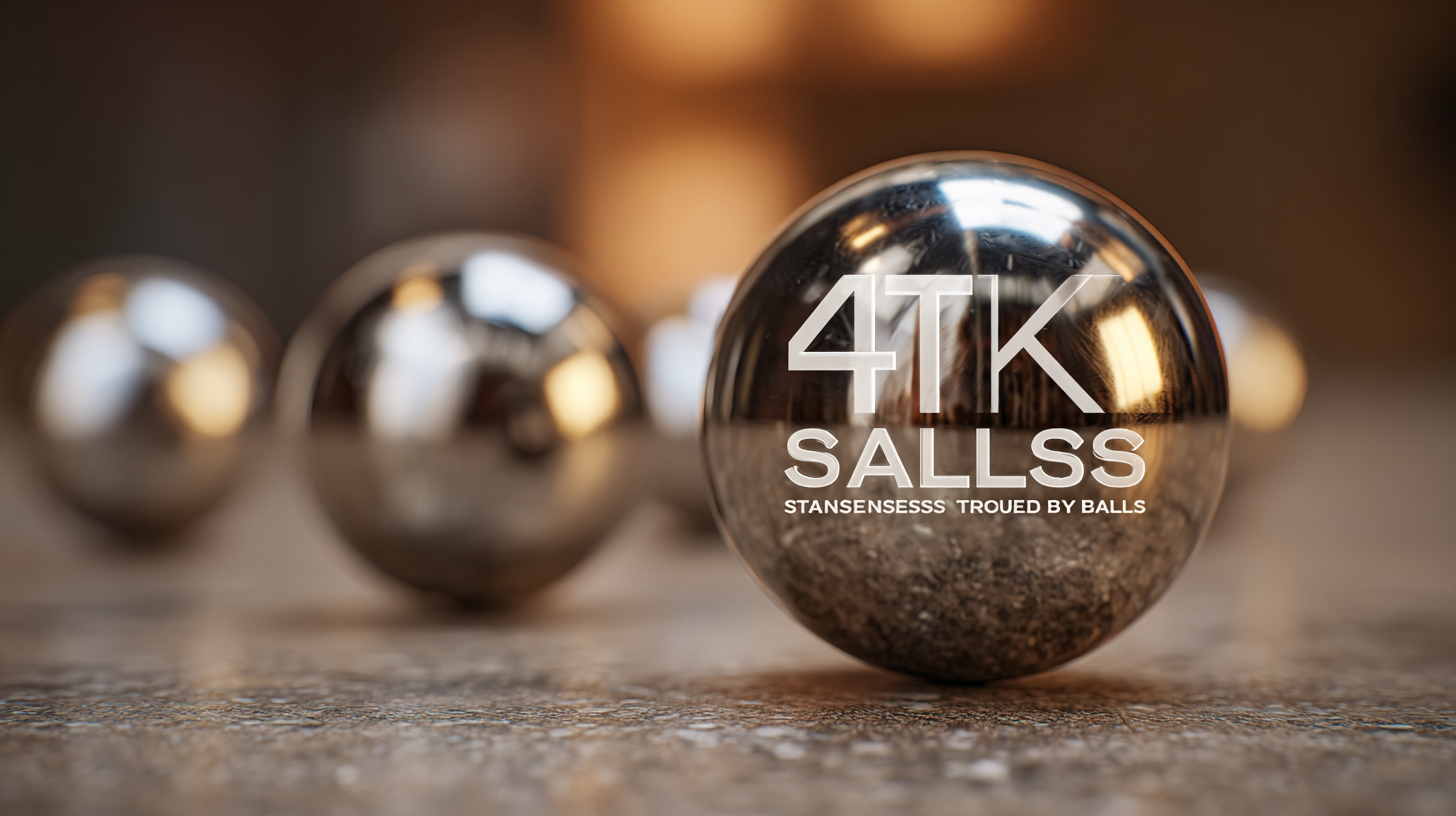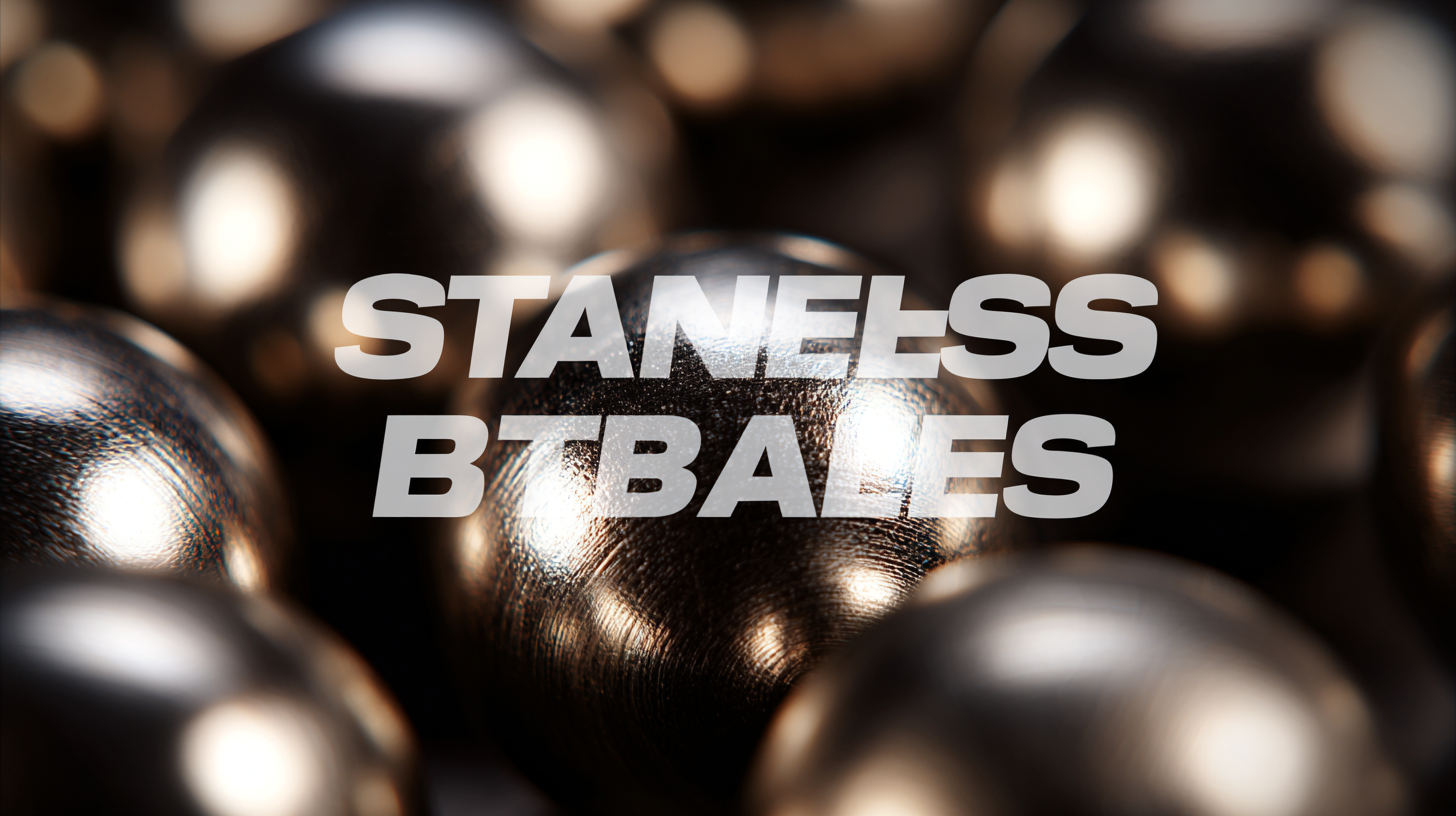
In the competitive landscape of manufacturing, sourcing the best stainless steel balls is crucial for ensuring product quality and performance. According to a recent industry report by Grand View Research, the global stainless steel ball market is projected to reach USD 5.2 billion by 2025, driven by increasing demand across various sectors, including automotive, aerospace, and medical devices.

As industries continue to evolve, the standards for stainless steel ball production have also become more stringent, with ISO 3290 and ASTM A295 standards setting the benchmark for quality and durability. Navigating through various suppliers and understanding the nuances of stainless steel ball specifications can be challenging.
This blog will delve into the top strategies for sourcing high-quality stainless steel balls, enabling manufacturers to make informed decisions that enhance their operational efficiency and overall product quality.
When sourcing stainless steel balls, it’s essential to understand the various types available in the market, as each serves different applications and has distinct properties. One of the most common types is the AISI 316 stainless steel ball, known for its excellent corrosion resistance and durability. This type is ideal for marine environments or situations where exposure to chemical agents is expected. Another popular option is AISI 302 stainless steel balls, which offer good strength and are frequently used in automotive and industrial applications.
In addition to composition, stainless steel balls also come in various finishes and sizes. For instance, polished balls provide a smooth surface perfect for high-precision applications, while matte finishes may be better suited for general-use environments. The choice of size can also impact performance; smaller balls are often used in precision instruments, while larger variants may serve in heavier machinery. Understanding these differences allows businesses to select the most suitable stainless steel balls for their specific needs, ensuring optimal performance and longevity in their applications.
When sourcing stainless steel balls for your project, several key factors should be at the forefront of your decision-making process. First, consider the material specification. Stainless steel comes in various grades; for example, 304 and 316 grades are commonly used due to their excellent corrosion resistance and durability. Understanding the specific environmental conditions your balls will face is crucial—whether they will be exposed to moisture, chemicals, or high temperatures can determine the best material choice.
Next, assess the manufacturing processes employed by potential suppliers. High-quality stainless steel balls are often produced using advanced techniques such as cold heading or precision forging, which enhance dimensional accuracy and surface finish. Additionally, inquire about quality control measures. A reputable supplier should provide documentation of tests, including hardness, diameter tolerances, and surface roughness, ensuring their products meet your project's stringent requirements. These considerations not only affect the performance and lifespan of the stainless steel balls but also contribute to the success of your overall project.
| Factor | Description | Importance Level |
|---|---|---|
| Material Quality | Ensure the stainless steel used is of high grade to prevent corrosion and maintain durability. | High |
| Size Precision | Verify if the balls are produced with strict adherence to size tolerances for fit and functionality. | Very High |
| Supplier Reliability | Check the reputation and reliability of the supplier to ensure consistent quality and service. | High |
| Cost | Evaluate the pricing strategy and ensure it fits within budget without compromising quality. | Medium |
| Stock Availability | Confirm that the supplier has sufficient stock to meet your project deadlines without delays. | High |
| Certifications | Ensure that the balls meet industry standards and certifications for performance and safety. | Very High |
When sourcing stainless steel balls, evaluating the quality of manufacturers is key to ensuring you receive a product that meets your specifications and performance standards. Start by examining the certifications and quality standards the manufacturer adheres to. Look for ISO certifications or any relevant industry standards that demonstrate their commitment to quality control. A manufacturer that invests in stringent quality assurance practices will likely provide reliable products, reducing the risk of defects in your application.
Next, consider the manufacturing process and materials used by potential suppliers. High-quality stainless steel balls should be made from premium-grade materials, such as 440C or 316 stainless steel, which offer corrosion resistance and durability. Request information about the production techniques employed, such as heat treatment and precision grinding, as these processes significantly impact the strength and surface finish of the balls. Additionally, obtaining samples for inspection can provide you with firsthand insight into the manufacturer's attention to detail and overall product quality.
When sourcing stainless steel balls in the industry, understanding the importance of certifications cannot be overstated. Certifications serve as a hallmark of quality and reliability, ensuring that the products meet industry standards and safety regulations. For instance, companies should look for certifications such as ISO 9001 for quality management systems and ASTM standards specific to stainless steel materials. These certifications not only guarantee product performance but also enhance trust with clients, providing them with reassurance that the components used in their applications are robust and compliant.

Recent developments in quality control highlight the necessity of independent certification as a tool for navigating compliance challenges. Without such certifications, suppliers often face obstacles in demonstrating quality compliance while managing costs. Reports indicate that a diversified sourcing strategy, backed by verified certifications, can significantly mitigate risks associated with product quality and legal compliance—especially in industries that are heavily regulated. As the market grows increasingly competitive, sourcing certified stainless steel balls can provide a competitive edge, ensuring both product excellence and customer satisfaction.
When sourcing stainless steel balls, balancing quality and price is crucial for maximizing value. A recent report highlighted that strategic procurement approaches can lead to a 10-20% improvement in overall cost efficiency. To achieve this, companies should leverage advanced analytics and artificial intelligence (AI) to identify optimal suppliers and make informed purchasing decisions. Utilizing data can help analyze supplier performance and market trends, ensuring that quality products are sourced without overspending.

Tip: When evaluating suppliers, consider adopting a dual assessment model that evaluates both technical capabilities and cost structures. This holistic approach enables organizations to pinpoint suppliers who not only meet production standards but also offer competitive pricing.
Additionally, implementing green procurement practices can positively impact both cost and sustainability. A meta-analysis revealed that companies adopting environmentally friendly sourcing methods experienced better operational performance. This suggests that investing in sustainable suppliers can yield long-term financial benefits while enhancing brand reputation.
Tip: Develop a cost intelligence framework that accommodates sustainability metrics. By integrating these factors into your sourcing strategy, you can ensure that your procurement decisions align with both cost goals and corporate social responsibility initiatives.
